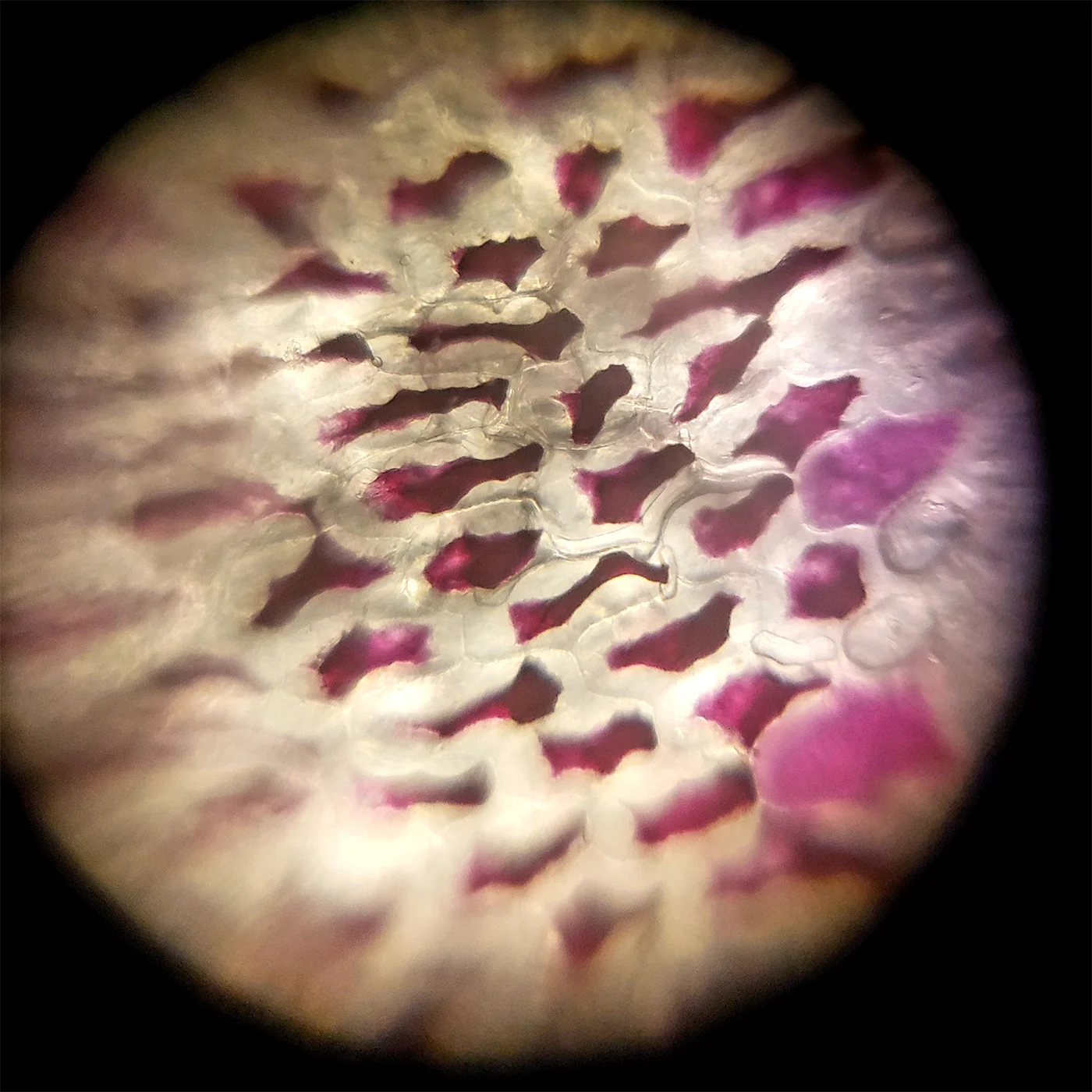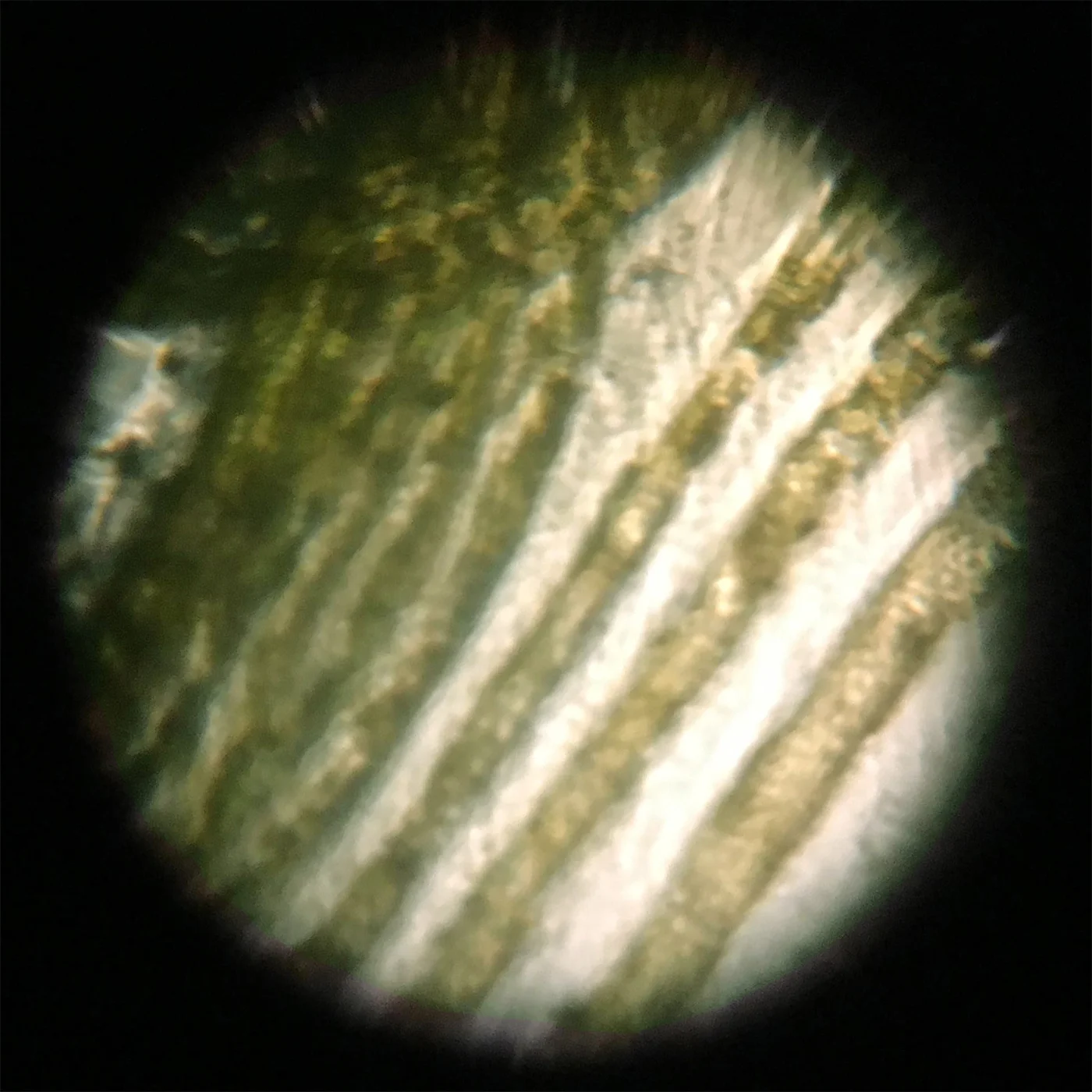Using Foldscopes™ for Offline Exploration in Online Biology Courses
The essence of active learning is cognitive activity, which may be fostered through a variety of instructional approaches (Chi & Wylie, 2014). Defined for the online context as “anything the students are doing with the presented course content to enhance their understanding” (University of Florida Center for Instructional Technology and Training, 2017; emphasis theirs), active learning is an inherent quality of undergraduate labs, and a principle of good instructional practice (Chickering & Gamson, 1987) that is repeatedly associated with improved learning (Armbruster et al., 2009; Kilgo et al., 2015) and positive affective outcomes (Corwin et al., 2018; Tirell & Quick, 2012).
Our online introductory biology courses include readings, quizzes, discussions, recorded lectures, and online and offline labs. Referring to offline labs in general, Jeschofnig and Jeschofnig (2011) attribute positive student outcomes to the responsibility students take for their own learning, the necessity of working through an activity on one’s own and the concomitant absence of opportunity to coast on the strength of a lab partner’s work, the removal of arbitrary time limits, and the sense of agency and personal ownership that comes with active engagement with the subject matter. Ranking consistently among our students’ reported favourites are those labs that take them away from the computer and guide them through ‘hands-on’ activities such as outdoor observations or the extraction of DNA from plant material.
Light microscopy is an engaging activity for novice and expert biologists alike. We recently developed three new lab activities that incorporate the use of Foldscopes [1] – portable microscopes that are assembled from paper and a small lens, provided in a kit. Foldscopes can magnify up to 140X with a resolution of 2 microns; they can be used alone or in combination with a smartphone camera and produce images comparable to those obtained with a basic light microscope (Cybulski et al., 2014) at a fraction of the cost (Yong, 2015). With Foldscopes we can provide students with direct access to the microscopic world via a safe, inexpensive, and biologically meaningful activity that they can participate in without supervision.
In BIOL 1020 (Cells, Genetics, and Evolution), students use Foldscopes in two labs. Starting with Microscopy, students observe red onion (Allium cepa) cells and practice the basic microscopy skill of estimating the actual size of specimen. In a subsequent Osmosis and Diffusion lab, students observe the effects of osmosis on plant cell structure by treating their red onion cells with a concentrated salt solution. In BIOL 1021 (Organismal Biology and Ecology), students use their Foldscopes to observe chloroplasts in plant or algal cells. In all three labs, students combine their own observations with provided images and other material to make connections to the physiological and evolutionary significance of the structures and processes under study. They can also easily share their photos and observations via the online platform Padlet [2], a virtual pinboard that can be embedded within Brightspace and which does not require students to set up an account to access.
Students collect and process their own specimens and images; while they are encouraged and guided to find specimens directly related to the lab, the activities aren’t contingent on students getting great results (though many of them did – see Figures 1-4!). This design allows some room for trial and error and gives students the freedom to observe and share other specimens of interest. They can also, if they wish, share their discoveries more widely via citizen science platforms such as iNaturalist [3], Foldscope’s own Microcosmos [4], and participation with initiatives such as BioBlitz [5].
Referring to the latter half of self-taught microscopist Antony van Leeuwenhoek’s life (1632-1723), historian Douglas Anderson (2014; p. 25) wrote, “Almost everything he saw, he was the first person ever to see.” Foldscopes can provide students not only with anytime, anywhere access to the unseen natural world, but also with the experience of following in the footsteps of one of the early pioneers of one of our most important scientific instruments, using a tool not unlike the one van Leeuwenhoek himself perfected.
ACKNOWLEDGEMENTS
The Foldscope labs were developed by Jennifer Van Dommelen and Jacob Fletcher, supported by a Teaching and Learning Enhancement Grant from the Centre for Learning and Teaching. Sessional instructors Beverly Hymes and Herb Vandermeulen offered valuable input on early drafts of the Chloroplast Diversity Lab. The Department of Biology provides Foldscopes to the students of BIOL 1020/21 at no charge.
FOOTNOTES
[2] www.padlet.com
[3] iNaturalist is a crowdsourced international online field guide; https://www.inaturalist.org/pages/about
[4] http://microcosmos.foldscope.com
[5] BioBlitzes are events where teams of volunteers work in a particular area to identify as many species as possible in a short period of time and share their observations in iNaturalist. Dalhousie hosted a BioBlitz on the Studley Campus in 2016 (https://www.inaturalist.org/projects/dalhousie-university-bioblitz-2016), and on the Studley and Agricultural Campuses in 2018 (https://www.inaturalist.org/projects/dalhousie-university-studley-campus-bioblitz-2018 and https://www.inaturalist.org/projects/dalhousie-university-agricultural-campus-bioblitz-2018, respectively).
References
Anderson, D. (2014). Still going strong: Leeuwenhoek at eighty. Antonie van Leeuwenhoek, 106(1), 3-26.
Armbruster, P., Patel, M., Johnson, E., & Weiss, M. (2009). Active learning and student-centered pedagogy improve student attitudes and performance in introductory biology. CBE – Life Sciences Education, 8(3), 155-264.
Chi, M. T. H., & Wylie, R. (2014). The ICAP framework: Linking cognitive engagement to active learning outcomes. Educational Psychologist, 49(4), 219-243.
Chickering, A. W., & Gamson, Z. F. (1987). Seven principles for good practice in undergraduate education. AAHE Bulletin, 39(7), 3-7.
Corwin, L. A., Runyon, C. R., Ghanem, E., Sandy, M., Clark, G., Palmer, G. C., Reichler, S., Rodenbusch, S. E., & Dolan, E. L. (2018). Effects of discovery, iteration, and collaboration in laboratory courses on undergraduates’ research career intentions fully mediated by student ownership. CBE – Life Sciences Education, 17(2), 1-11.
Cybulski, J. S., Clements, J., & Prakash, M. (2014). Foldscope: Origami-based paper microscope. PLoS ONE, 9(6), e98781. https://doi.org/10.1371/journal.pone.0098781
Jeschofnig, L., & Jeschofnig, P. (2011). Teaching lab science courses online: resources for best practices, tools, and technology. San Francisco, CA: Jossey-Bass.
Kilgo, C. A., Sheets, J. K. E., & Pascarella, E. T. (2015). The link between high-impact practices and student learning: Some longitudinal evidence. Higher Education, 69(4), 509-525.
Tirell, T., & Quick, D. (2012). Chickering’s seven principles of good practice: Student attrition in community college online courses. Community College Journal of Research and Practice, 36(8), 580-590.
University of Florida Center for Instructional Technology and Training. (2017). Active vs passive learning in online courses. Retrieved from http://citt.ufl.edu/online-teaching-resources/activelearning/active-vs-passive-learning-in-online-courses/
Yong, E. (2015, Sep 1). The $1 pocket microscope. The Atlantic. Retrieved from https://www.theatlantic.com/science/archive/2015/09/one-dollar-origami-microscope-Foldscope/403156/



